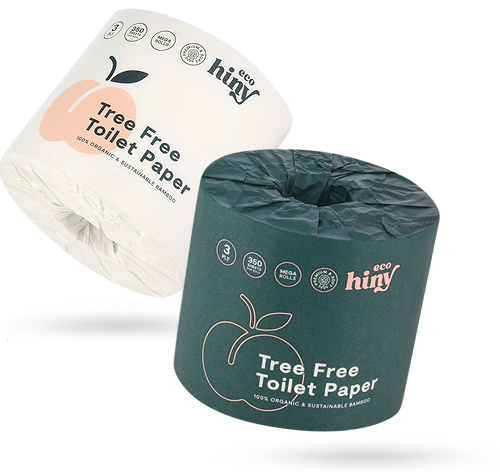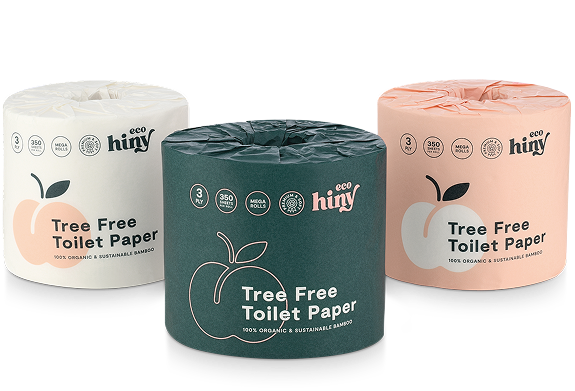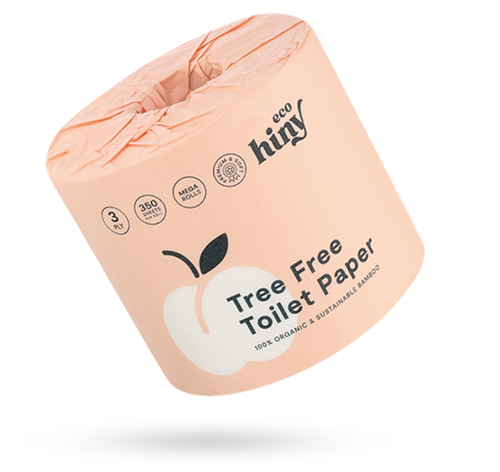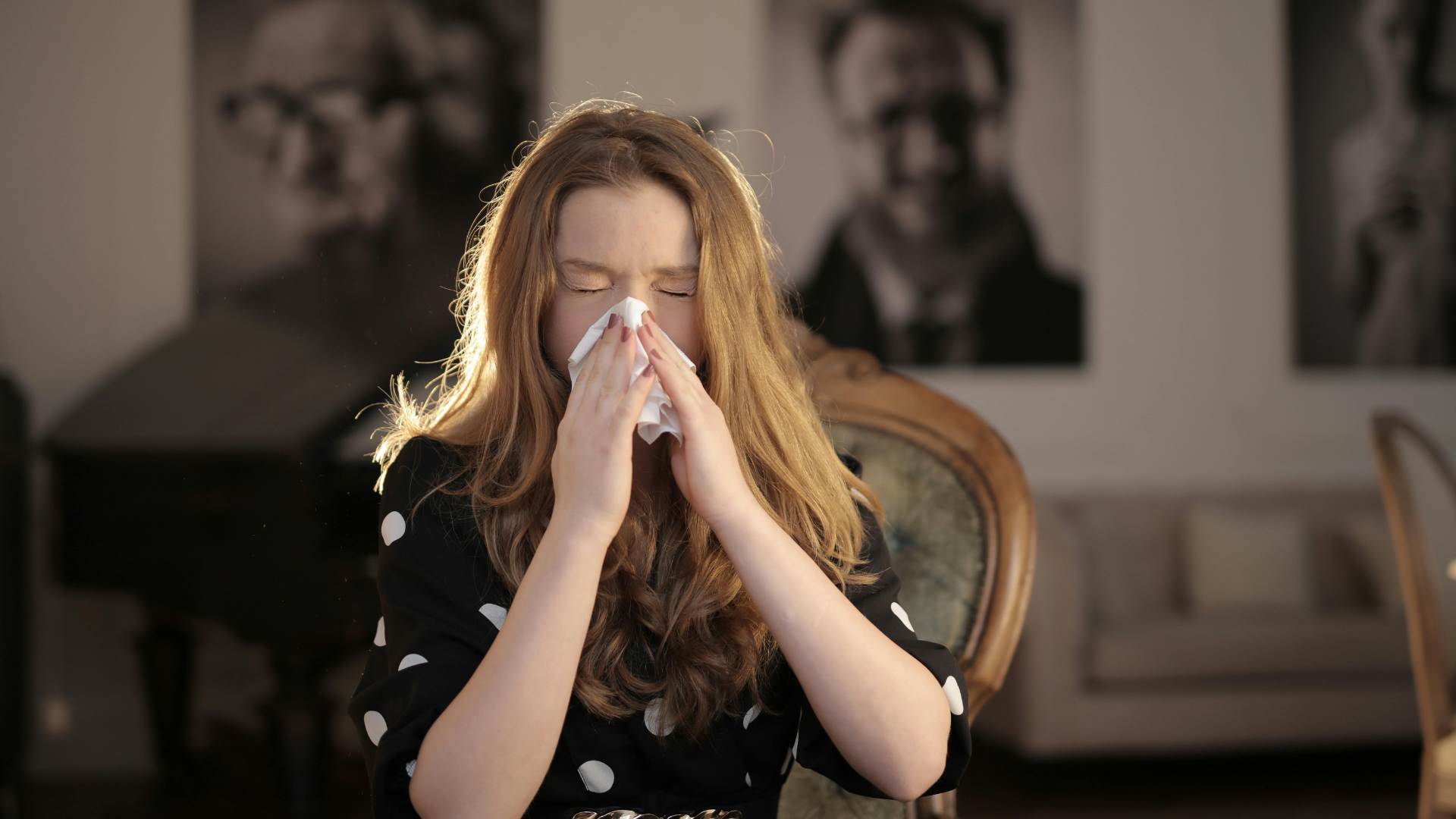Key Points
- Traditional toilet paper may contain harmful chemicals like chlorine, formaldehyde, BPA, and PFAS, which can cause irritation or allergic reactions—especially for those with sensitive skin.
- Common symptoms of reaction include itching, rashes, contact dermatitis, and in some cases, disrupted pH balance that may lead to further discomfort.
- ecoHiny’s bamboo toilet paper is a chemical-free, hypoallergenic alternative made without dyes, fragrances, or toxins—offering a safer, more sustainable choice for your skin and the planet.
Toilet paper is an essential personal hygiene product. It's in our carts and cabinets, stocked on shelves and storage bins. Even though it's a ubiquitous item in most households, many people don't put much thought into what they're using to wipe their most intimate areas!
We tend to take it for granted. It's a household staple, and we assume that toilet tissue on supermarket shelves is safe and effective for our purposes. While your preferred toilet paper may seem safe, there's a chance you're exposing yourself to some serious chemicals.
Potentially Harmful Chemicals
Like many production practices, the manufacturing of traditional toilet paper is riddled with unhealthy and potentially harmful additives.
Wood pieces from harvested hardwood trees are cooked in chemicals to create the pulp that will be used to make the paper. That pulp is then washed and sent to a bleaching plant, where it undergoes several chemical processes in order to bleach the paper white.
The final product that makes its way to supermarket shelves and then into our homes contains traces of these chemicals used in production.

Hypoallergenic,BPA-Free, PFAS-Free, Elemental Chlorine-Free
ecoHiny's 3-ply bamboo toilet paper.
From $15.99
Here's an overview of the substances that could be present in your current paper.
Elemental Chlorine is a toxic gas used to bleach wood pulp in paper products.
Furans and Dioxins are highly toxic chemicals that are a by-product of the chlorine bleaching process.
Formaldehyde is used to strengthen toilet paper when wet to prevent it from breaking down. It is a known carcinogen.
Petroleum-based mineral oils and paraffin are often added to toilet paper rolls to make them softer and smell better.
Fragrances present in scented toilet paper contain chemically derived fragrances or perfumes.
BPA, or bisphenol A, is a chemical used in the production of certain plastics, resins, and some paper products.
Per- and Polyfluoroalkyl Substances (PFAS) are another somewhat troubling substance potentially in our toilet paper. PFAS are synthetic substances used in various consumer products. Per- and Polyfluoroalkyl Substances have even been linked to significant long-term health issues (1).
Exposure to these substances can cause mild discomfort in some cases and serious skin issues in others, especially for those with sensitive skin. Here's what could happen.
These Chemicals Can Trigger Allergies
The most common cause of allergic reaction to toilet paper is caused by the variety of chemicals that can be present in traditional toilet paper.
Skin allergies are a type of allergic reaction that occurs when the skin comes into contact with an allergen. These allergens can include things like certain types of metals, fabrics, soaps, cosmetics, lotions, and toilet paper. When the skin is exposed to an allergen, it can become inflamed, itchy, and irritated.
Symptoms of skin allergies can vary depending on the severity of the reaction and the type of allergen involved. Mild symptoms may include redness, itching, and a rash, while more severe reactions can cause blistering, hives, and even swelling.
More Adverse Reactions and Irritations
Even if you're not allergy-prone, other skin issues can result from the potential chemical makeup in traditional toilet paper brands.
Contact Dermatitis
Contact dermatitis is a type of skin inflammation that occurs when the skin comes into contact with a substance that triggers an irritation of the skin. Traditional toilet paper can be a cause of perianal and perineal allergic contact dermatitis.
The rough texture of some types of toilet paper can be abrasive and cause irritation or even small tears on the skin. If you're more sensitive to added fragrances or chemicals in the toilet paper, you could experience significant irritation. Using too much toilet paper or wiping too aggressively can also cause irritation and discomfort for those with sensitive skin.
Chemical Sensitivity
Individuals with chemical sensitivities may experience symptoms such as itching, redness, or rash due to the presence of certain chemicals in toilet paper.
Elemental chlorine is likely the culprit of an adverse reaction if you are sensitive to chemicals. Elemental chlorine refers to the pure form of chlorine, which is a greenish-yellow gas at room temperature and pressure. Elemental chlorine is often used as a bleaching agent in the traditional toilet paper industry.
Yeast Infections
It is unlikely that a yeast infection will be contracted from toilet paper as toilet paper does not contain yeast. Yeast infections are caused by an overgrowth of the fungus Candida, which is typically found in the vagina. (2) However, using scented or colored toilet paper may cause skin irritation or disruption of the natural pH balance in the genital area, which can increase the risk of developing a yeast infection.
Avoiding a Toilet Paper Allergy
The good news? You don't have to deal with any of these issues. There are other options out there that allow you to avoid any discomfort connected to your toilet tissue.
Safer Alternatives
If you have sensitive skin or are allergy-prone, you might want to rethink your T.P. There are definitely better options out there. If chemical-riddled, toxic toilet paper doesn't sound appealing to you, here's our suggestion.
Try ecoHiny 100% bamboo toilet paper.
When you choose bamboo, you're not taking a chance with chemicals like if you choose to stick with traditional toilet paper.
With an ecoHiny purchase, your paper is guaranteed to be free from:
- Dyes
- Fragrances
- Harmful chemicals
- Additives
- Bleaches
- Plastics
- Inks
Aside from these assurances, you'll be getting an incredible environmental bonus! The sustainable attributes of bamboo make ecoHiny your partner in protecting our planet.
Our bamboo is organic and Forest Stewardship Council certified, meaning it only comes from responsibly managed forests where the focus is on preservation, equity, and respect. (3) We also promise no plastics and offer carbon-neutral shipping.
Every roll of ecoHiny is a step toward preserving our precious hardwood forests and safeguarding our environment.
Other Options for Less Worrisome Wiping
When you're ready to make the switch to 100% bamboo toilet paper, ecoHiny is here for you! Shop our line of premium 3-ply toilet paper and choose a delivery frequency that's right for you. Bamboo toilet paper delivers a safe, comfortable experience every time.
Although we believe bamboo is best, if you're interested in other eco-friendly options with a lower likelihood of chemical exposure, here are a few others we'd recommend.
Bidet-A bidet is designed to use water to clean your hiny. It is typically installed next to the toilet and features a small basin with a faucet and a sprayer. They are often considered to be more hygienic and environmentally friendly than using traditional toilet paper.
Reusable -Reusable wipes are pieces of cloth. They can be made from a variety of materials, such as cotton, bamboo, or flannel. After use, they can be washed and reused.
Organic Cotton-Organic cotton toilet paper is made from 100% organic cotton, which is grown without the use of harmful chemicals and pesticides. Organic cotton toilet paper is also biodegradable, which means it breaks down quickly and easily in the environment, minimizing its impact on the planet.

Hypoallergenic,BPA-Free, PFAS-Free, Elemental Chlorine-Free
ecoHiny's 3-ply bamboo toilet paper.
From $15.99
Avoid Allergies and Irritation With ecoHiny
Take annoying allergies and irritation out of the equation with ecoHiny’s non-toxic toilet paper. Bamboo truly offers worry-free wiping; it's peace of mind for you and the planet.
Transitioning to ecoHiny bamboo toilet paper is easy. Browse our shop page and select your preferred size box of individually wrapped rolls. You can even set up a subscription to have ecoHiny delivered to your door at regular intervals. Choose the frequency that's most convenient for you!
Chemical-free and tree-free means the ultimate healthy and eco-friendly choice for your home.
Source:
- "Our Current Understanding of the Human Health and Environmental Risks of PFAS." United States Environmental Protection Agency, www.epa.gov/pfas/our-current-understanding-human-health-and-environmental-risks-pfas.
- "Candidiasis." Centers for Disease Control and Prevention, www.cdc.gov/fungal/diseases/candidiasis/index.html.
- "What's in a Label?" Forest Stewardship Council, fsc.org/en/what-the-fsc-labels-mean.

Hypoallergenic,BPA-Free, PFAS-Free, Elemental Chlorine-Free
ecoHiny's 3-ply bamboo toilet paper.
From $15.99

Hypoallergenic,BPA-Free, PFAS-Free, Elemental Chlorine-Free
ecoHiny's 3-ply bamboo toilet paper.
From $15.99





